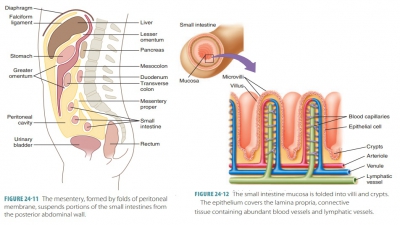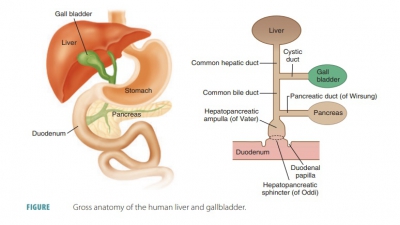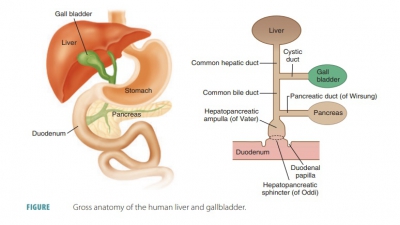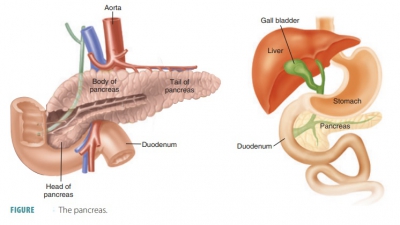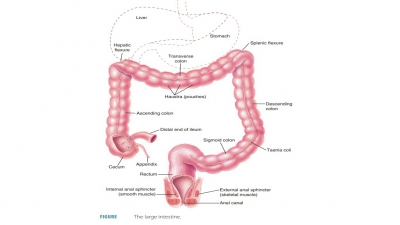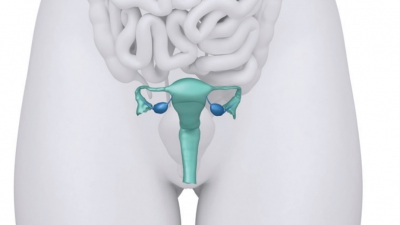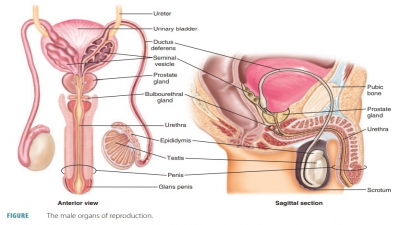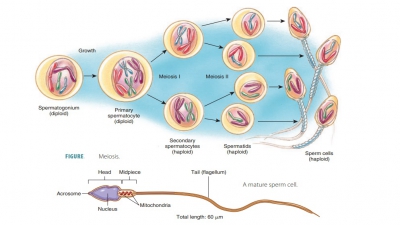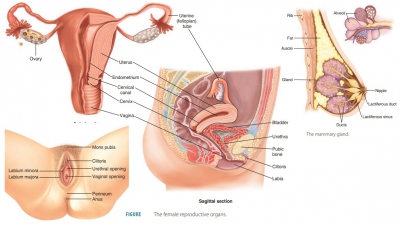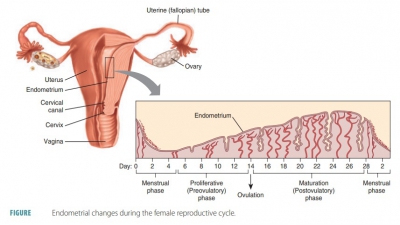Digestion and Absorption of Nutrients
| Home | | Anatomy and Physiology | | Anatomy and Physiology Health Education (APHE) |Chapter: Anatomy and Physiology for Health Professionals: Digestive System
Typical meals contain carbohydrates, lipids, proteins, water, and vitamins.
Digestion
and Absorption of Nutrients
Typical meals contain carbohydrates, lipids, proteins,
water, and vitamins. The digestive system handles each of these components
differently. Digestion involves breaking down large organic molecules before
absorp-tion can occur. Water, electrolytes, and vitamins can be absorbed
without preliminary breakdown but may require special transport mechanisms.
Discussion of the various types of nutrients is essential in under-standing
their actions within the digestive system.
As various types of food move through the GI tract, chemical
processing via enzymatic breakdown occurs. Even after a short time in the
stomach, the appearance of various foods has changed dramatically. This is due
to mechanical breakdown. Digestion then breaks them down into their basic
chemicals, each with extremely different molecules. These molecules are small
enough that they can be absorbed across the small intestine’s walls.
Digestion is a catabolic process, in which large food
molecules are broken down into chemical build-ing blocks or monomers. Enzymes secreted into the
alimentary canal lumen from intrinsic and accessory glands are used for this
process. Enzymatic break-down of food molecules is hydrolysis, since water is required to break down the molecular
bonds. Most digestion occurs in the small intestine. Pancreatic enzymes break
down polymers and some other large chemicals into smaller pieces. The
intestinal or brush border enzymes break these down into
individual components. The alkaline
pancreatic juice neutral-izes the acidic chyme entering from the stomach. The
enzymes can then operate efficiently in this environ-ment. Pancreatic juice is
the main source of lipases, and along with bile, is necessary to break down
fats.
Absorption moves substances from the GI lumen into the body
cells. Substances usually do not move between cells due to the tight junctions
that join epi-thelial cells of the intestinal mucosa at their apical surfaces.
The materials must pass through the epi-thelial cells instead, entering via an
apical membrane and exiting through a basolateral membrane into the
interstitial fluid. Then, substances can diffuse into blood capillaries to be
transported via the hepatic por-tal vein to the liver. However, certain lipid
products of digestion enter the lacteal in the villus and are carried through
the lymphatic fluid to the blood.
The plasma membrane’s structure allows for passive
absorption of nonpolar substances. These can dissolve in the lipid core of the
plasma membrane. All other types of substances require a carrier mechanism. The
majority of nutrients utilize active transport that is directly or indi-rectly
driven by metabolic energy in the form of ATP.
Every day, as much as 10 liters of foods, drinks, and GI
secretions enter the alimentary canal. However, only 1 liter or less will
reach the large intestine. Nearly all foods, 80% of electrolytes, and most of
the water will be absorbed in the small intestine. Absorption occurs all along
the small intestine, with most being com-pleted by the time chyme moves into
the ileum. The ileum’s major role is absorption of bile salts, which will be
recycled back to the liver to be resecreted. The over-all absorptive ability of
the small intestine is amazing.
Carbohydrate Digestion and Absorption
Carbohydrates
include
sugars and starches and are organic
compounds. Energy from carbohydrates mostly is used to power cellular
processes. They are ingested in forms that include grains; vegetables; glycogen
from meats; disaccharides from cane sugar, beet sugar, and molasses; and
monosaccharides from fruits and honey. Digestion breaks carbohydrates down into
monosac-charides, which include fructose, galactose, and glucose, for easy
absorption. Liver enzymes convert fructose and galactose into glucose, which is
the form of carbohy-drate most commonly oxidized for use as cellular fuel.
Some excess glucose is changed to glycogen, which is stored
in the liver and muscles. Glucose can be rapidly mobilized from glycogen, but
only a certain amount of glycogen can be stored. Excess glucose is usually
converted into fat and stored in adipose tissue. For energy, the body first
metabolizes glucose, then glycogen into glucose, and finally fats and proteins.
There are two steps in the digestion of complex
car-bohydrates, which include starches and simple polysac-charides. The first
step utilizes carbohydrases from the salivary glands and pancreas. These are
known as sali-vary amylase and pancreatic alpha-amylase. The second step utilizes brush border enzymes from
the microvilli, which break disaccharides and trisaccharides into sim-ple
sugars known as monosaccharides
before absorp-tion. The enzyme called maltase breaks the bonds of the two glucose molecules of the
disaccharide maltose. The
enzyme sucrase breaks
down the disaccharide sucrose into
glucose and another six-carbon sugar called fructose. The enzyme lactase
hydrolyzes the disaccharide called lactose into one
molecule of glucose and one molecule of galactose.
The main carbohydrate in milk is lactose, which provides essential functions in
infancy and early childhood, since it breaks down lactose. When the intestinal
mucosa stops making lactase, the person becomes lactose intolerant. If this person consumes milk or other dairy
products, many different digestive problems can occur, including gas, lower
abdominal pain, diarrhea, and vomiting.
Lipid Digestion and Absorption
Lipids include
fats, fat-like substances, and oils; cholesterol; and phospholipids.
They supply energy for body processes and building of certain structures. The
small intestine is the primary site of lipid diges-tion via the presence of
lipase from the pancreas.
The digestion of lipids requires lingual lipase from the glands of the tongue as well as pancreatic lipase. Triglycerides are the
most important and numerous dietary lipids. They are made up of three fatty
acids, attached to one molecule of glycerol. Lingual and pan-creatic lipases
break off two of the fatty acids, leaving monoglycerides.
The lipases are water-soluble enzymes. Lipids
usually form large drops that exclude water molecules. Therefore, lipases are
able to attack just the exposed surfaces of lipid drops. Lingual lipase starts
to break down triglycerides in the mouth and continues for varying amounts of
time within the stomach.
Chemical digestion is improved by bile salts when they
emulsify lipid drops into tiny emulsion drop-lets. This provides increased
access for pancreatic lipase. Emulsification only occurs after chyme has been
mixed with bile inside the duodenum. Pancre-atic lipase can then break
triglycerides apart, form-ing a mixture consisting of monoglycerides and fatty
acids. When these molecules are released, they react with bile salts in the
chyme, forming tiny micelles, which
are lipid–bile salt complexes, each only about 2.5 nanometers (0.0025
micrometers) in diameter.
As a micelle contracts the intestinal epithelium, lipids
diffuse across the plasma membrane, entering the cytoplasm. New triglycerides
are synthesized from the monoglycerides and fatty acids. These triglycerides
along with absorbed fat-soluble vitamins, phospholip-ids, and steroids become
coated with proteins. They are then known as chylomicrons. Most bile salts within micelles are reabsorbed via
sodium-linked cotransport. Approximately, 5% of bile salts secreted by the
liver enter the colon and only about 1% are lost in the feces.
Chylomicrons transport dietary fats to muscle and adipose
cells. Very low-density lipoprotein (VLDL) molecules, formed in the liver,
transport tri-glycerides from excess dietary carbohydrates. When VLDL molecules
reach adipose cells, the enzyme lipo-protein lipase helps to convert VLDL to
low-density lipoprotein (LDL). Because most triglycerides have been removed,
LDL molecules have higher cholesterol than VLDL. Cholesterol is obtained for
the body’s needs by peripheral tissue cells, which use endocytosis to remove
LDL from the plasma. FIGURE
24 -18 shows digestion, absorption, and transportation of lipids.
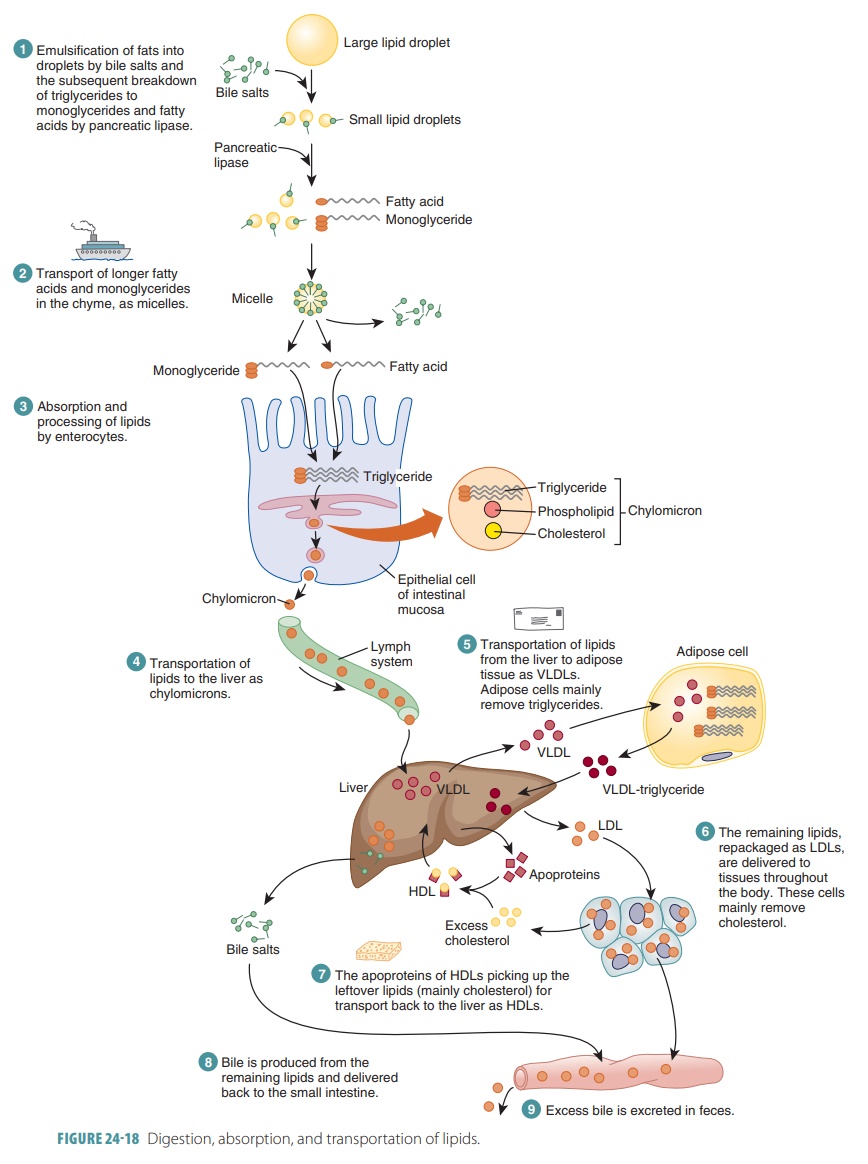
High-density lipoprotein (HDL) has high levels of protein and low levels of lipids. It removes cholesterol from tissues and sends it to the liver.
HDL molecules containing cholesterol enter liver cells via
receptor-mediated endocytosis. The liver excretes the cholesterol into the bile
or uses it to create bile salts. The intestine reabsorbs much of the
cholesterol and bile salts and repeats the cycle. Each time, some cholesterol
and bile salts reach the large intestine and are excreted in the feces. The
intestinal villi also absorb electrolytes via active transport and water via
osmosis.
Protein Digestion and Absorption
Proteins are
created from amino acids and include enzymes,
plasma proteins, the muscle components actin
and myosin, hormones, and
antibodies. After digestion breaks
proteins down into amino acids, they may also supply energy. They are
transported to the liver, where deamination occurs, which is the loss of their
nitrogen-containing portions. They react to form the waste urea, excreted in
urine.
Proteins supply the essential amino acids and provide nitrogen
and other elements. Protein require-ments differ based on body size,
metabolism, activity levels, and other factors. Nutritionists recommend a daily
protein intake of 0.8 g/kg of body weight; there-fore, most average adults
should consume 60–150 g of protein per day.
Protein digestion is a complicated process that requires a
long time because of the complicated struc-tures of proteins. Proteolytic
enzymes must attack individual proteins while stomach acids disrupt pro-tein
structures to expose peptide bonds. The acidity of the stomach allows for pepsin, the proteolytic enzyme secreted
in its inactive form from the chief cells. Pep-sin is effective when the pH is
between 1.5 and 2.0. It breaks down peptide bonds in polypeptide chains.
As chyme enters the duodenum, enteropepti-dase triggers
conversion of trypsinogen into trypsin. The pH is increased by buffers to
between 7.0 and 8.0. Pancreatic proteases begin to work. Trypsin, chymotrypsin,
and elastase are able to break certain peptide bonds within polypeptides.
Trypsin breaks the bonds that involve amino acids such as arginine and lysine.
Chymotrypsin attacks peptide bonds that involve tyrosine and phenylalanine.
Carboxypeptidase removes the final amino acid in a polypeptide chain and is not
dependent on any specific amino acid. This produces free amino acids while
other peptidases generate different short peptides.
Several peptidases, especially dipeptidases, are con-tained within the epithelial surfaces of the
small intes-tine. This type of enzyme breaks short peptide chains into
individual amino acids, which diffuse through cells to their basolateral
surfaces. They are then released into interstitial fluid via facilitated
diffusion and cotransport. When reaching the interstitial fluids, amino acids
diffuse into intestinal capillaries and are transported to the liver via the
hepatic portal vein.
Vitamins
Vitamins are other
organic compounds required for normal
metabolism. Body cells cannot synthesize adequate amounts of vitamins, so they
must come from foods. Vitamins are classified by their solubil-ity. Fat-soluble
vitamins include A, D, E, and K, and water-soluble vitamins include the B
vitamin group and vitamin C.
Bile salts in the small intestine promote absorp-tion of
fat-soluble vitamins. The water-soluble vita-mins include the B vitamins and
vitamin C. They are absorbed in the small intestine via specific active or
passive transporters—except for vitamin B12, which is absorbed in
the terminal ileum.
Water Absorption
Every day, the small intestine receives about 9 liters of
water, mostly from GI tract secretions. The chyme is mostly made up of water
and about 95% is absorbed in the small intestine via osmosis. Of the remaining
5%, most is absorbed in the large intestine. Only about 0.1 liter remains as a
softening agent in the feces.
Water is normally absorbed at about 300–400 mL per hour. It
moves freely back and forth across the intestinal mucosa. However, net osmosis happens when a concentration
gradient is created by the active trans-port of solutes—mostly sodium ions—into
the muco-sal cells. Therefore, water uptake is highly coupled to solute uptake.
Also, water uptake affects absorption of substances that usually pass by
diffusion. When water flows into mucosal cells, these substances follow along their
own concentration gradients.
Related Topics
